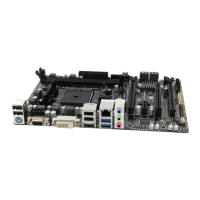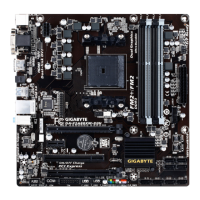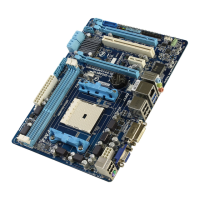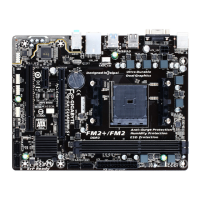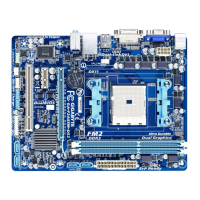- 34 -
InstallingtheSATARAID/AHCIDriverandOperatingSystem
With the correct BIOS settings, you are ready to install the operating system.
A. Installing Windows
Step 1:
You need to install the SATA RAID/AHCI driver during the OS installation. Use an alternative system to copy
the SATA RAID/AHCI driver from the motherboard driver disk to a USB ash drive. Copy the SATA RAID/AHCI
driver folder under BootDrv in the driver disk depending on your Windows version, for example:
Windows 10 driver folder: "BootDrv\Hw10"
Windows 8.1 driver folder: "BootDrv\Hw81"
Windows 7 driver folder: "BootDrv\Hw7_A88"
Step 2:
Boot from the Windows 8.1 setup disk and perform standard OS installation steps. When the screen requesting
you to load the driver appears, select Browse.
Step 3:
Then browse to the USB ash drive and select the location of the driver, for example:
Windows 10 64-bit RAID driver directory: "Hw10\RAID\x64"
Windows 8.1 64-bit RAID driver directory: " Hw81\RAID\x64"
Windows 7 32-bit RAID driver directory: "Hw7_A88\RAID\x86"
Step 4:
When a screen as shown in Figure 1 appears, select AMD-RAID Controller and click Next to load the driver
and continue the OS installation.
Deleting an existing disk array could result in loss of data. Record all array information including the
array type, the disk members, and stripe block size in case you wish to undo a deletion.
Deleting an Array
The Delete Array(s) menu option allows for deletion of disk array assignments.
1. Select Delete Array(s) in the Main Menu and press <Enter>.
2. In the Arrays section, press the <Insert> key on the array you want to delete and then press <Enter> to proceed.
3. When prompted to conrm, press <C> to continue the deletion or <Esc> to cancel.
Please visit GIGABYTE's website for details on conguring a RAID array.
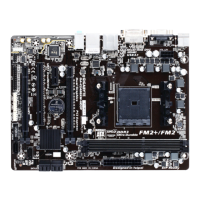
